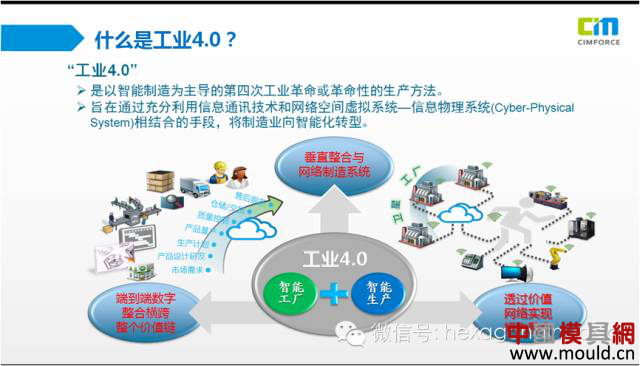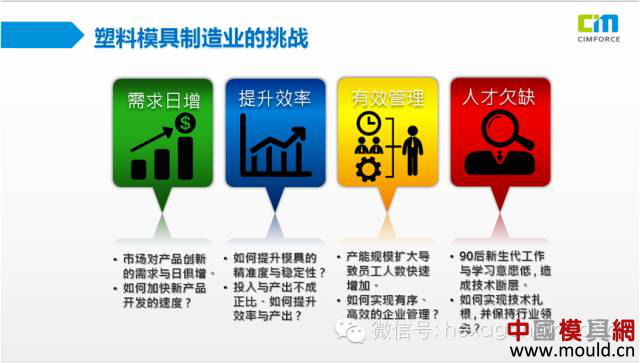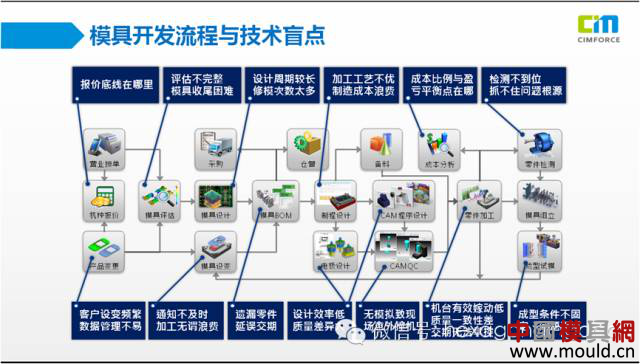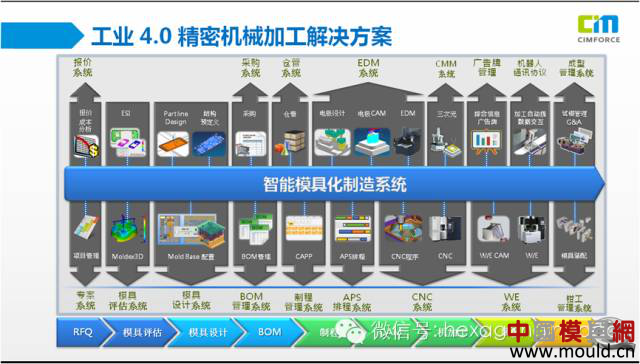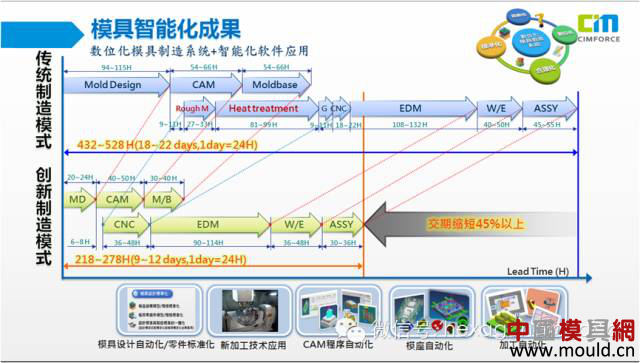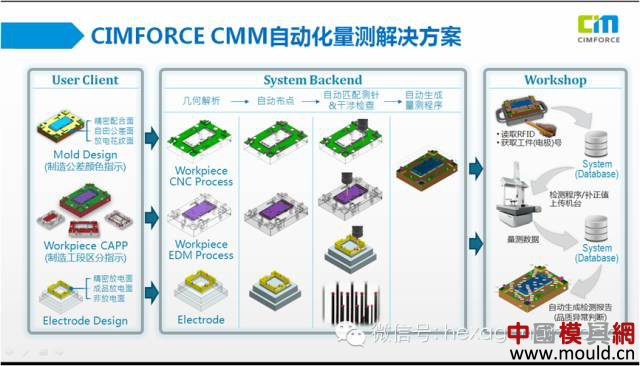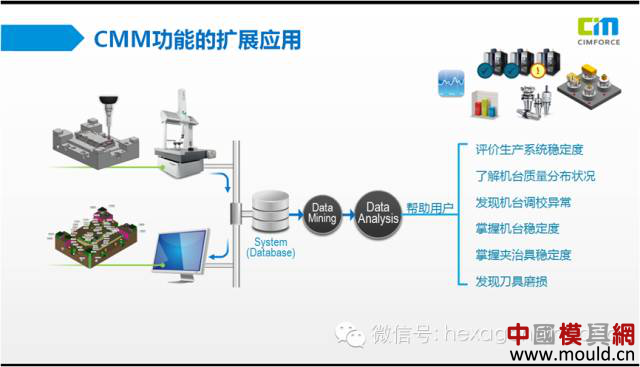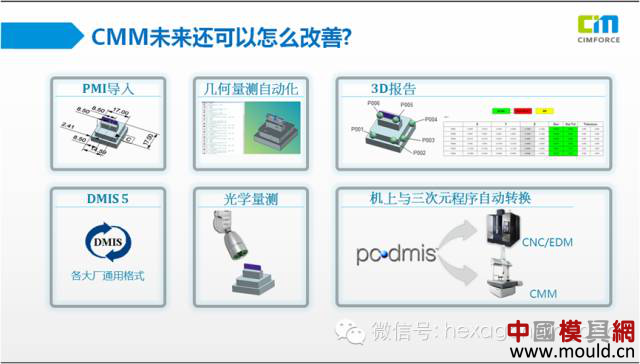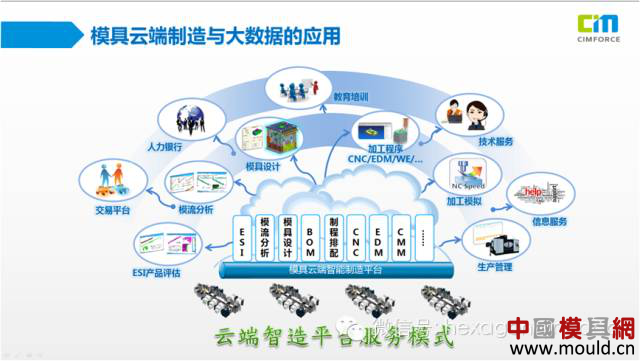He served as the deputy general manager of Foxconn Technology Group Hon Hai Die CAD/CAM Center and served as the general manager of Shangbo Technology Co., Ltd. In the more than ten years of research and development of intelligent manufacturing systems, Xie focused on the professional mold manufacturing field. The following is his speech at the HxGN LIVE Hong Kong Convention Automation and Industry 4.0 Summit - With regard to Industry 4.0, there are many uses and ways to talk about it. It is nothing more than the use of the Internet. It connects all things and connects the entire manufacturing part. So what is Industry 4.0's help for the mold factory? I used to be a very well-known company in the mold and manufacturing industry for 16 years. At the beginning, we mainly did design. Later, by 2002, we received a big order. At that time, we required that the delivery period for each set of molds be 7 days, and the accuracy should be in the order of mm, which could be interchanged globally. In 2002, this task was a big challenge, and the number was huge. There were 200 molds in one month. The requirements for each mold were also a challenge in the current year and the personnel experience was insufficient. At that time, I thought that if we couldn't achieve the boss's thinking through conventional practices, we have since started planning digital factories to better reduce manpower and increase efficiency. From 2003 to 2006, we became the world’s number one mold supplier for this company. Regardless of speed, quality, delivery, we have achieved a significant lead and become the standard of its global suppliers. This is a very difficult thing, but we did it. Below, let us analyze the challenges faced by the mold factory: 1, mold factory requirements change rapidly, and the difficulty of the mold is getting higher and higher. More than 20 years ago, the mold was simple and not as complicated as it is now. Today's molds have many requirements such as two-color, improved precision, and so on. 2, is the delivery period. Twenty years ago, the delivery date for a set of molds might have been 30 days, and it was shortened to 20 days. After my boss took over, the delivery time was shortened to 7 days, the efficiency was greatly increased, and the delivery period was greatly compressed. 3, there is a talk about why the software is only done in China and not in other countries. There is a big feature here. The size of all mold factories in China is bigger than Japan and Europe. I have a factory that I previously managed. There are 2,200 employees and work is started 24 hours a day. Except for China, this is not visible in other countries. With such a large scale, you need to consider how to effectively manage and control the performance of the entire plant. This is an important issue. 4, a new generation of young people are often reluctant to work in the factory, how can we produce such exquisite products as iphone today, I think in addition to the use of software, there is no better way. Mold factory is a place with high technology intensity. From CAD, CAM to various processing technologies, CNC, EDM, and wire cutting also include measurement technology, and it also includes all molding technologies. How to establish the molding conditions? How to make a quote? The management of the entire project process? How to carry out quality control? This is a complex industry that contains a lot of technology and content. How to manage the process well, how to combine software automation, how to combine with professional knowledge, as well as integrate all the IO and monitoring part, manage all the machines, so as to form intelligent manufacturing. Intelligent manufacturing, from the beginning of the project to the prototype testing, contains a lot of things. A very important part is the combination of virtual reality, industrialization and informationization. The point is that if we start not to control from the model, there is no way to do the whole plant management, nor can we turn automation into reality. From CAD model to paperless: In CAD modeling, each CAD model is given different processing accuracy requirements and surface roughness requirements. In the CAPP process design, all process process information is also added to CAD. In the model, passing one by one, you can reduce the need for some repetitive tasks. At the same time, the part that needs to be connected is automatically achieved through this system. This is why the software platform was conceived. Through this system, we have reduced the time for making molds from 16 days to 7 days. Thanks to the changes in our systems and processing equipment technologies, measurement equipment from Hexagon and Makino's machine tool equipment helped to shorten the time for the delivery of our molds by 45%, and the training time for personnel was also significantly shortened. This is smart manufacturing. The benefits we bring. In addition to the intelligent manufacturing of molds we talked about, we also have to consider the integrated data of mold intelligent manufacturing. What changes can be made to the manufacturing industry? We cannot simply understand that measurement is measurement accuracy. Measurements can automate the measurement. From the accuracy requirements and process requirements set in the CAD model, the system can understand where the measurement is to be made, resulting in a true measurement procedure. Our complete solution, in addition to the program, also includes integration with the site. Reading through RFID, you can download the program and automatically generate a test report. The extended application of measurement also includes monitoring many things, such as: 1, the stability of the machine 2, understand the quality of the machine distribution, whether it needs to be maintained, whether the need for laser correction 3, found that the adjustment of the machine is abnormal, the tooling is stable, the knife has no problem, this is the measurement can bring us Just like the discharge conditions we talked about, each segment of the discharge condition requires artificial selection. Through the collected data, find out the rules, and the system can replace manual selection. Through a variety of data, such as electrode processing, we have already understood the contact projection area of ​​the electrodes, and the required VDI specifications and depth, all the data are put together for correlation and integration, and we can automatically select the entire discharge conditions. Each machine, and can continue to optimize. In this way, it can bring changes to the entire industry. In addition, taking the EDM process as an example, there are many reasons to do an electrode and the electrode is bad, such as Z-axis anomaly, X/Y deviation, gap anomaly, C-axis problem, etc... All these problems come together, you May need a master teacher, one by one check. Through our system analysis, you can get all the data out and pinpoint the problem. This is the application of data for us. Many people here may not have applied PMI-3D annotations. This 3D annotation exists in many CAD models and represents product module information. With this information, you can bring tolerance information into the automated labeling section. In this way, it is not possible to carry out automatic measurements without the need for people to prepare the measurement program. This is where I think the measuring machine needs to be improved in the future. In addition, many of the automatic measurements we perform are measured on the point cloud, the deviation of the position of each point vector, whether it is possible to automate the measurement of geometric tolerances, and the measurement report is displayed in three dimensions. The factory now has a variety of measuring equipment. They come from different vendors. We can have a standard language platform. The other thing is that the measurement of optical images also needs more automation. There are also three coordinates and measurements on the machining center, how to achieve the exchange of measurement procedures and results. This is the part that I think has room for improvement in the future. It is very important that the future will focus on the application of the cloud. We know that mold factories have large, medium, and small scales, and their performance varies. Large mold factories have good equipment and personnel, but they are not necessarily better than small ones. Through the cloud platform, we can preserve the skills of SMEs and help us improve. Our goal is to make all the technologies into a platform to use, including CNC, EDM, CMM... In the future, this is our bottom information. Everyone can connect and integrate all processing technologies and knowledge to help Each user quickly applies and adds CAD model information. Our system includes wire cutting, CNC electrode programs, measurement programs, and EDM programs, all of which are automated. There is no need for human intervention. Using automated methods, using geometric recognition functions, and cutting logic libraries to achieve these functions are similar to the results of human operations. If the process of processing one electrode in the future is very cheap, no more manpower is required, and this will change the industry. The simulation of the five-axis machining, which was previously operated by people, can now use the cloud platform to operate in the background, thus changing the model of the entire industrial environment. For the future, we will have more innovation models, produce more SOHO families, and they will change the entire mold industry. In the periphery, we can also conduct education, training, customer support, and even establish a trading platform. This is the change brought about by the cloud manufacturing of the entire mold manufacturing industry. This change is not only in China, but also regional. It will change the future of the entire global mold. Disposable Tableware,Disposable Lunch Box,Disposable Tiffin Box,Paper Lunch Box Disposable Shandong Shengquan New Materials Co., Ltd. , https://www.sqnewmaterials.com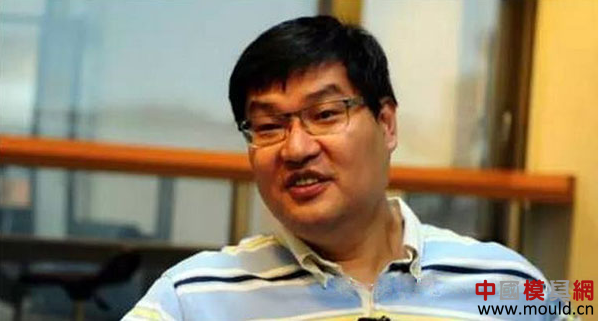
1. What is Industry 4.0 